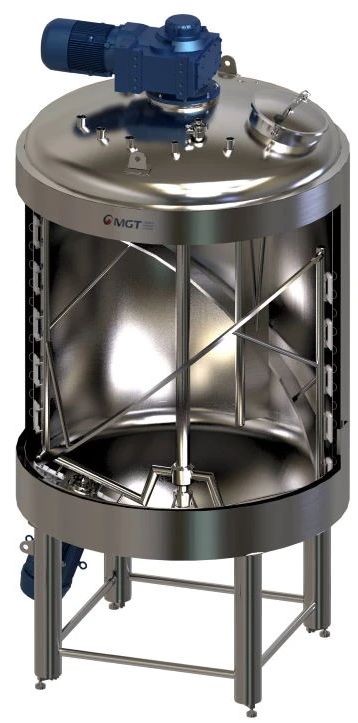In the realm of industrial mixing and homogenization, the quest for consistency and uniformity is unending. Achieving the perfect blend of ingredients in the pharmaceutical sector, creating impeccable emulsions in the food industry, or mixing chemicals with precision in research and development—are the pivotal challenges that industries face daily.
To meet these challenges, high-shear homogenizers are commonly hailed as the heroes, but there’s another, often underappreciated hero in the mix: Pressure Mixing Tanks. In this comprehensive article, we’re diving into the world of Pressure Mixing Tanks to uncover what you need to know.
From understanding their key components and functions to exploring safety considerations, applications, and maintenance best practices, we’re going to unearth the potential of these essential vessels in the fascinating world of homogenization.
Pressure Mixing Tanks: An Essential Ingredient in Homogenization
Pressure Mixing Tanks, though not always in the spotlight, play an indispensable role in the art and science of homogenization. These specialized tanks create the optimal conditions for uniform mixing, working in harmony with high-shear homogenizers to break down particles and achieve the desired product consistency.
These tanks come in a variety of forms and sizes, tailored to suit the specific needs of different industries.
Key Components and Functionality
To truly appreciate the value of Pressure Mixing Tanks, it’s essential to understand their inner workings. These tanks typically consist of a robust vessel, agitators, pressure controls, and inlet/outlet ports. Agitators are the driving force behind the mixing process, while pressure controls ensure the right conditions are maintained.
Delving into the components and their functions is vital for harnessing the full potential of these tanks in your mixing operations.
Safety Considerations and Regulations
In the world of industrial equipment, safety is paramount. Pressure Mixing Tanks, operating under pressure, require careful handling and adherence to specific safety regulations. This section will take a closer look at the safety considerations that need to be in place to minimize risks and ensure the well-being of those working with these tanks.
Applications and Industries
The versatility of Pressure mixing tanks is one of their most significant strengths. These tanks find applications in diverse industries, from pharmaceuticals, where precision in mixing is critical for drug formulations, to the food and beverage sector, where consistent product quality is non-negotiable.
This article will explore the various sectors that rely on Pressure Mixing Tanks to achieve their desired product outcomes.
Maintenance and Best Practices
Just like any other industrial equipment, Pressure Mixing Tanks require regular maintenance and adherence to best practices for optimal performance. Proper care and maintenance not only extend the lifespan of these tanks but also ensure they continue to operate efficiently.
In this section, we’ll share insights into how to maintain Pressure Mixing Tanks and offer best practices for getting the most out of these crucial components of the homogenization process.
In conclusion, Pressure Mixing Tanks are the unsung heroes that underpin the homogenization process across a multitude of industries. Understanding their functionality, ensuring safety, and adhering to maintenance best practices are key to achieving consistent and high-quality mixing outcomes.
Whether you’re involved in pharmaceuticals, food production, or any other industry, a comprehensive knowledge of Pressure Mixing Tanks is a significant step toward unleashing the full potential of homogenization in your operations.


